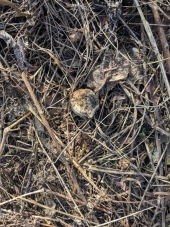
 2
2








 2
2




 2
2




[img]http://i109.photobucket.com/albums/n52/havlik1/permie%20pics2/permiepotrait3pdd.jpg[/img]
"One cannot help an involuntary process. The point is not to disturb it. - Dr. Michel Odent









[img]http://i109.photobucket.com/albums/n52/havlik1/permie%20pics2/permiepotrait3pdd.jpg[/img]
"One cannot help an involuntary process. The point is not to disturb it. - Dr. Michel Odent
 1
1




Principal - Terra Phoenix Design
http://TerraPhoenixDesign.com








Steve Nicolini wrote:
Dave,
This peach leaf curl thing. Is that what I think it is? Watching the leaves to see if they curl? We have one peach tree outside. It produced decently this year, and the leaves did not curl. If I tried growing from one of the pits, do you think it would be curl resistant?
Principal - Terra Phoenix Design
http://TerraPhoenixDesign.com




















 I have a bit of a problem with labs that sell products. Are their test results slanted to sell their products? Well, maybe not, but..... how would I know?
I have a bit of a problem with labs that sell products. Are their test results slanted to sell their products? Well, maybe not, but..... how would I know?











Check out Redhawk's soil series: https://permies.com/wiki/redhawk-soil

|
What a stench! Central nervous system shutting down. Save yourself tiny ad!
The new permaculture playing cards kickstarter is now live!
https://www.kickstarter.com/projects/paulwheaton/garden-cards
|





